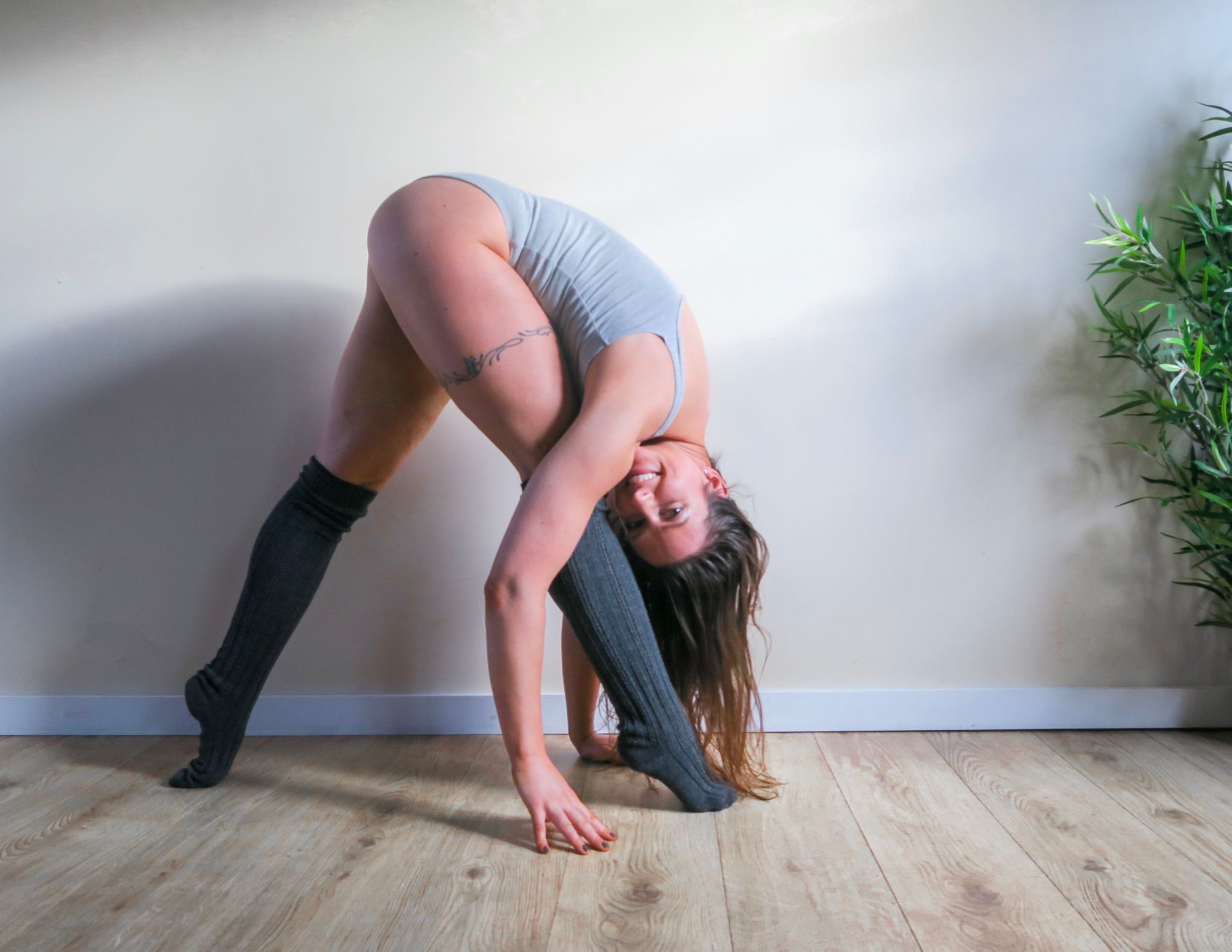Every so often a debate pops up about whether you can teach effectively without demoing. I think it's safe to say that most instructors prefer to be able to demo while they're teaching, and most students prefer to be shown a move while they're learning it. But, there are all sorts of reasons instructors might sometimes be in a position where we need to teach without demoing. This can be due to injury, pregnancy, illness, wanting to save energy or being unable to do the move. So it's really great to have some knowledge of how to effectively teach without the need to demo.
Teaching Style
The amount I usually demo seems to be fairly standard for an aerial instructor. I demo every new move, new combinations, old moves if the student needs to refresh their memory etc, the number of times I demo depends on the student. Some people like to see it once then get on with it, other people like to see a move a couple of times to get their head around it before they attempt it. When I first started learning pole and aerial, neither my pole or aerial instructor demoed much. (This isn't my aerial instructors usual style, she was unfortunately injured just before I started taking lessons with her which prevented her from being able to demo much, but she did do a lot of the teaching techniques I'll talk about in this blog which made it a lot easier to learn!) I think it's partly due to learning in this way that made me want to demo a lot, as a student I found it quite difficult to learn without being shown the move. I also enjoy demoing, when I demo throughout all of my lessons it means I don't have to train as much! I find that when I demo a move, I do it much slower and pause at certain points, which gives me a much greater understanding of the move. I do have times when I'm unable to demo, at the moment I'm injured so I haven't been able to demo for a few weeks. There are lot's of teaching techniques that I use to make sure students still have a great lesson, while I'm limping!
Props
Trying to demo a move standing on the floor can be great, and quite funny! For aerial hoop, using a hula hoop to talk through a move and show the placement of body parts gives students a better visual of what they're aiming for. For silks, standing or laying/sitting on the mat and using the silks to show the move means students can see the wraps and silks placement, without you needing to do the move. I know that some people also use dolls and mini equipment to demo a move, I've never done this but I love the idea!

Students
If you're teaching group classes, using a student to demo a move while you talk through it is perfect! Of course, this only works if the student knows the move, can do it properly and is advanced enough to do it smoothly and slowly enough that other students can see it clearly. If you have a student that is happy and capable to do this, then this can be more effective than demoing yourself as you can point out teaching points without being out of breath and holding an awkward position!
Videos
Watching a move on a video is the next best thing to seeing it in real life. It's a great idea to build up a video library of all the moves you teach, so if you're in a position where you can't demo, you can show students a video of the move. This is great if it's moves/combinations the students have already done and just need to refresh their memories. I also use this all the time when I'm teaching doubles moves. Often it's helpful to have videos even when you can demo as you can slow them down, pause bits and show from all angles, which can be really difficult for some moves. Unique Aerialists Academy is really useful for this.
Perfect Explaining Moves
Explaining moves clearly is important regardless of whether you can demo or not. But it's even more important when students aren't seeing the move as they normally would. Learning how to describe a move and where the equipment will be touching them can help students visualise it. Also learning quick, clear phrases to use when someone is in the air will help them work through the move without making mistakes and getting worn out, for example saying "toward the ceiling/floor" is easier for students to understand than saying "up/down" when they're upside down or horizontal! Though there are always times when I can't talk quickly enough and mix up body parts!
Alternative Lessons
You not being able to demo is a great time to do something different in the lesson which doesn't require any demonstration. One thing I usually do is add up all the moves a student has done, get them to pick 3 or 4 numbers between 1 and the number of moves they have done, then they have to work out how to put those moves together into a combination. Writing down lots of moves and getting a student to pick them out of a hat works the same way. Trying to work out different ways into and out of a move is also a great lesson. Or spending some time going over old moves and really perfecting them is always a good thing to do and is a good memory test for students.
Even with all of this, I still miss being able to just demo a move. I'm keeping my fingers crossed that I'll be back in action soon! Is there anything else you do to help students if you can't demo?
Be unique,
Robyn xx


Comments